Land for Wildlife has been engaging with the Tjuwanpa Women Rangers for many years now, providing support for on-ground work and facilitating workshops with the Ntaria Junior Rangers. In early April, Land for Wildlife helped the Women Rangers to discover the wildlife in the region by conducting a short biodiversity survey, as well as assist with some feral Cat (Felis catus) trapping.
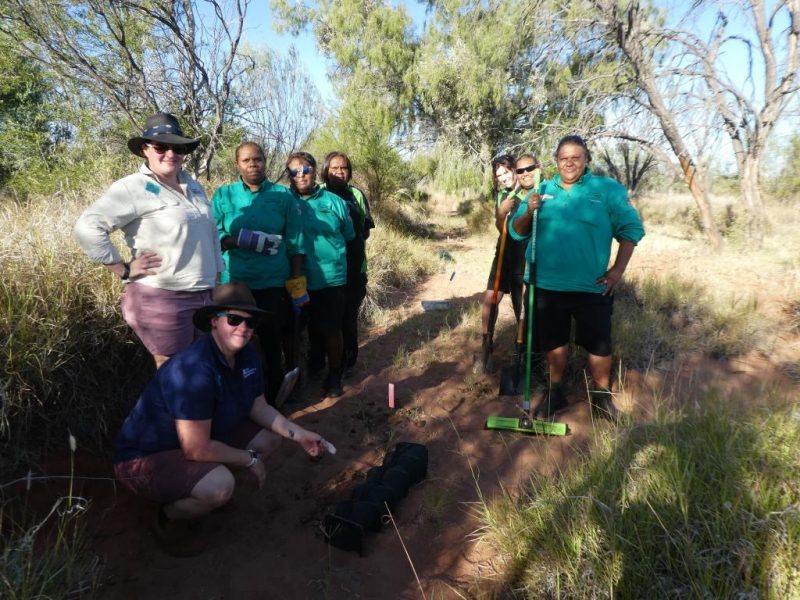
For the biodiversity survey, we used a range of techniques to assess the presence of wildlife. This included the use of two camera traps, four pitfall traps, six Elliott traps, six funnel traps and an insect pan trap. We also smoothed out sand in the trap site to check for tracks each morning on arrival to the undisclosed site. The survey was conducted over two nights, though ideally biodiversity surveys would go for a longer period to ensure an adequate representation of the biodiversity of a region has been obtained. For the feral Cat trapping session, the Tjuwanpa Women Rangers set up three traps spaced along the ends of the biodiversity survey trap lines and trapped for two nights in line with the biodiversity survey.
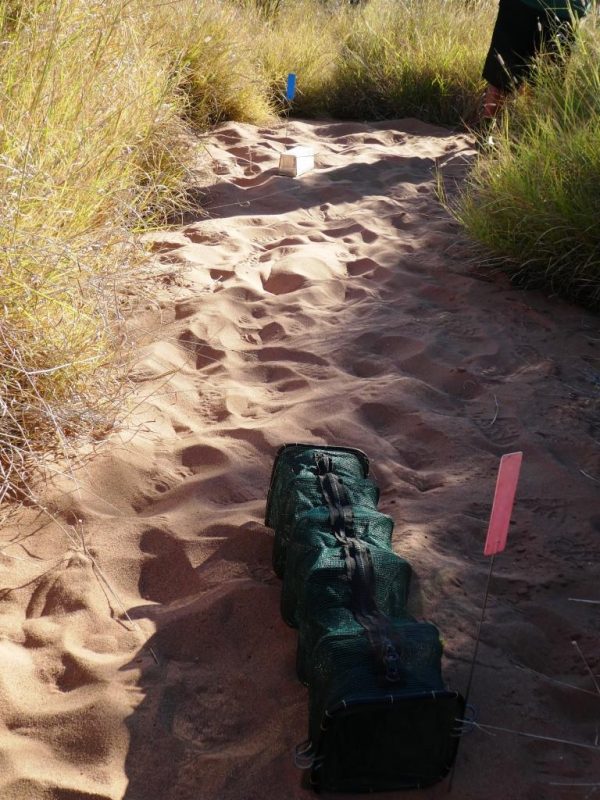
Pitfall traps were established to capture small mammals, reptiles, invertebrates and other creatures. A net is set up along a transect, with deep buckets set in the ground. The theory goes that if an animal crossing the sand bed comes across the net, it will follow it in an attempt to cross and eventually drop into a bucket. Funnel traps are designed with a large opening and a narrow end inside the mesh trap tube, with the ability to capture small reptiles, mammals and invertebrates. Elliott traps consist of an elongated box with a depression plate inside, designed to trap small mammals when baited with peanut butter and oats. An insect pan trap was set up in an open area and filled with water, salt and bio-friendly detergent. The camera traps are a method of recording biodiversity without actual capture of an individual, rather heat and movement sensors detect a passing animal and take several photographs as record of presence.
We were able to record the presence of three individual frogs, one on the first morning and two on the second morning. These were quickly released from the pitfalls and upon release they were seen to burrow back into the sand for the day. One of the pitfalls was successful in trapping a Pie-dish Beetle (Helea sp.) and a native Cockroach (Order: Blattodea). The camera traps, funnel traps, Elliott traps, and insect pan traps came up empty, as did the three feral Cat traps. There were, however, plenty of tracks in the sand to observe on both nights. Before setting the traps, some Hopping Mice (Notomys sp.) and feral Cat tracks were seen crossing the area. During the trapping, we observed small reptile tracks, frog tracks (easily identified as they led straight to a pitfall that housed the individual) and legless lizard tracks. A set of tracks belonging to a young Australian Bustard was also seen along the road near the survey site, showing that they are in the region.
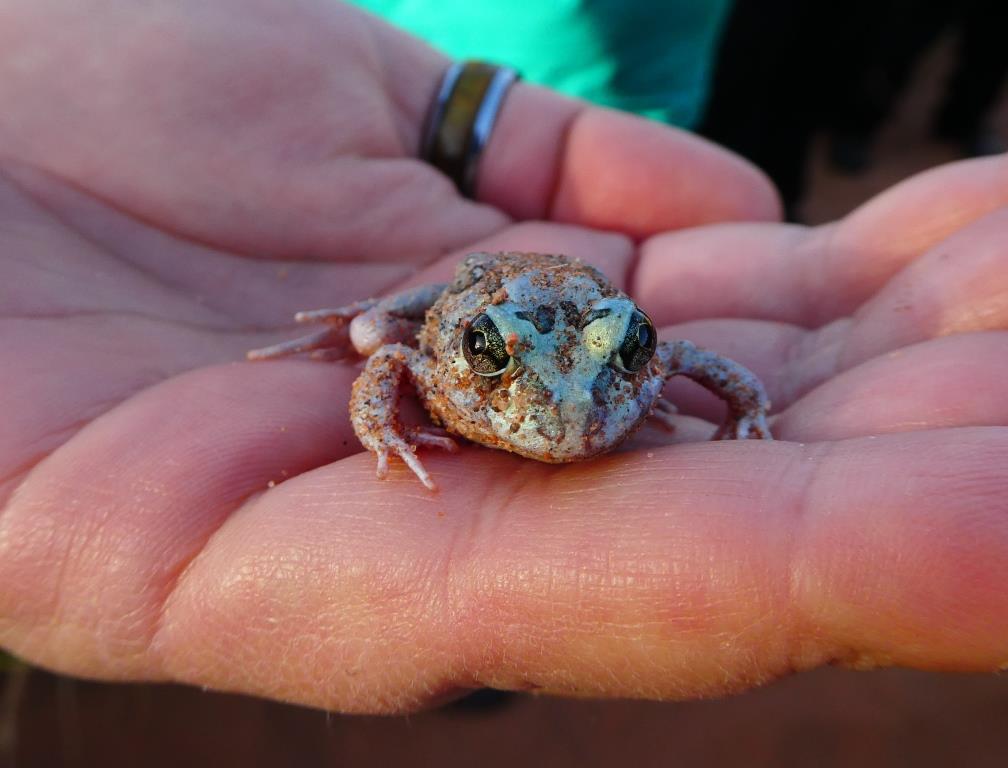
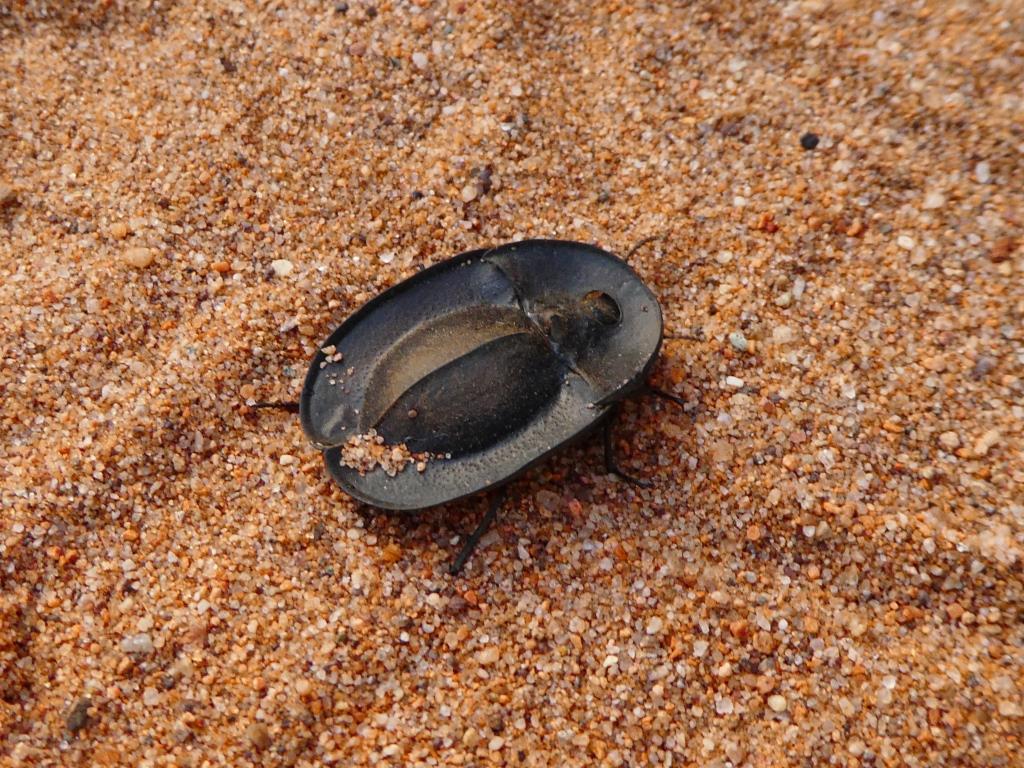
We also helped to show the Women Rangers how to choose a survey site, as well as show them a range of ways to assess biodiversity from a desktop with a host of excellent online resources (Atlas of Living Australia, NR Maps, NRM InfoNet). We had a great time trapping and look forward to assisting the Tjuwanpa team again in the near future.
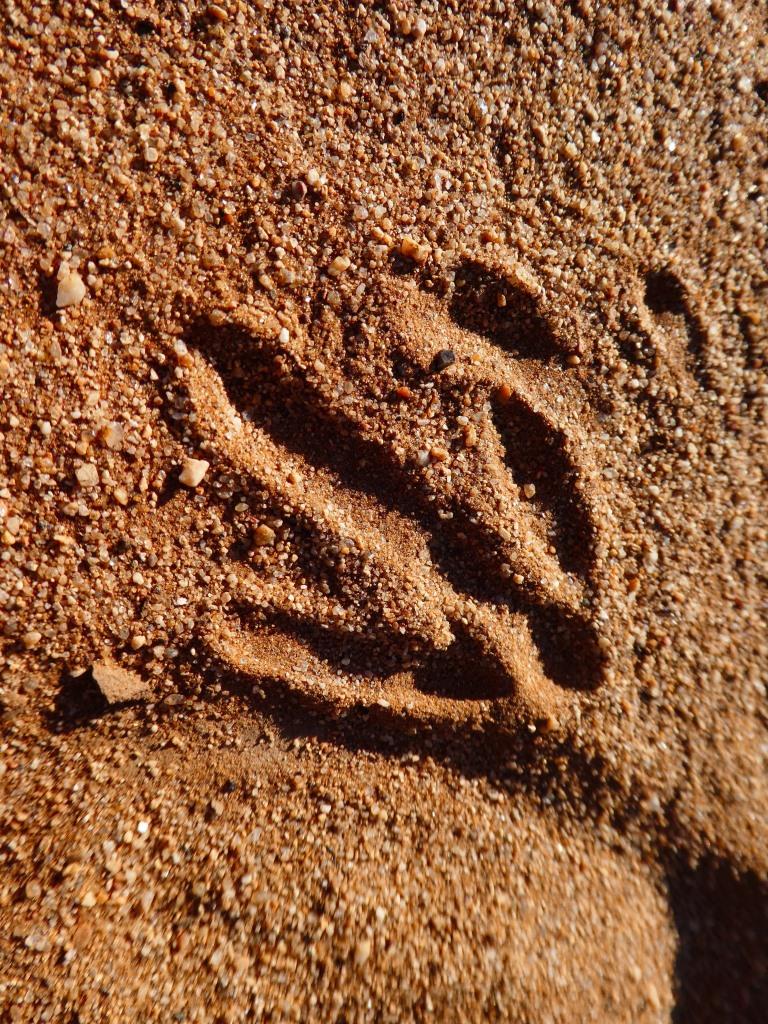
We thank the Tjuwanpa Women Rangers and traditional custodians of the land for allowing the Land for Wildlife team to visit and conduct a biodiversity survey.
This biodiversity survey was conducted with Animal Ethics approval (Charles Darwin University Animal Ethics 12006 Landscape, fauna and flora survey and impact assessment in relation to mineral and petroleum exploration, infrastructure development and conservation initiatives throughout the Northern Territory), a Parks and Wildlife Commission NT permit (60855 Permit to Interfere with Protected Wildlife) and a Department of Primary Industry and Resources permit (026 Licence to Use Premises for Teaching or Research Involving Animals).
Categories:
Amphibians, Biodiversity, Cats, Ferals, Invertebrates, Native Fauna, Reptiles, Survey, Trapping, Workshop